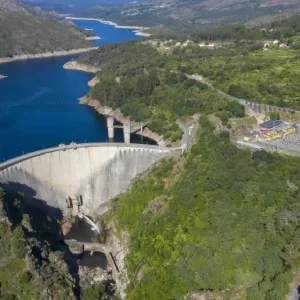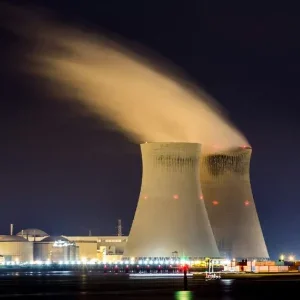
Moore’s Law, formulated by Gordon Moore in 1965, predicted that the number of transistors placed on a single square inch of an integrated circuit chip would double every two years, leading to an exponential increase in computing power. This Law has had profound implications for the development of HPC, not least in the energy sector, and the evolution of cloud computing, shaping the landscape of modern technology.
It is now well-recognised that Moore’s Law is nearing its end. Since its formulation, there has been about one trillion-fold increase in the amount of computing power being used in predictive models. To improve these high-performance models further, we need exponentially more computing power. Without it, the necessary gains in accuracy will diminish. But, with increasing costs and shrinking space available for the growing number of semiconductor chips involved in HPC compute, all sectors, including energy from oil & gas through to renewables, face a new dilemma.
McKinsey estimates that global power consumption will triple by 2050. Energy suppliers are working on the development of new technologies that can more sustainably generate, store, and transport energy to consumers. With the impact of climate change adding urgency to reducing energy use and energy waste, the energy industry is accelerating innovation to drive impact and outcomes at scale. Artificial intelligence (AI), advanced analytics, 3-D imaging, and the Internet of Things (IoT), supported by HPC, are all contributing to energy production to ensure a smoother transition to a more sustainable pathway.
HPC in practice in the energy sector
In the oil and gas industry, HPC is used extensively for contemporary scientific research, and the number of fields that it can be applied to is constantly growing, such as weather forecasting, earthquake imaging and genetic analysis. Oil extraction can now utilise HPC to improve process efficiency and accuracy and allow mining companies to save vast sums of money, affording them a greater competitive advantage in this market.
Advanced algorithms running on supercomputers can process huge amounts of data, enabling geoscientists to create detailed subsurface maps with higher accuracy and resolution. This capability enhances the success rate of exploration efforts, reduces drilling risks, and optimises resource extraction. Furthermore, HPC facilitates reservoir simulation, allowing engineers to predict fluid flow behaviours within underground formations. By simulating various production scenarios, companies can optimise well placement, extraction techniques, and reservoir management strategies. These simulations also aid in understanding the geo-mechanical complexities associated with hydraulic fracturing, enabling safer and more sustainable extraction practices.
HPC also has a huge impact on the renewables sector in the modelling of weather patterns, energy demand fluctuations, and grid operations. Weather forecasting models powered by HPC accurately predict renewable energy generation potential, helping utilities optimise the integration of solar and wind power into the grid. By aligning generation with demand patterns, grid operators can enhance grid stability, minimise restrictions, and maximise renewable energy use through the Massive Internet of Things (MIoT).
Moreover, HPC contributes to the optimisation of power generation and distribution systems, including thermal power plants, nuclear reactors, and smart grids. Advanced simulation tools allow engineers to design more efficient turbines, boilers, and cooling systems, thereby reducing energy losses and environmental impacts. In addition, real-time monitoring and control systems empowered by HPC enhance grid resilience, enabling rapid response to outages, fluctuations, and even cyber threats.
Scalability has been a key
The scalability and cost-effectiveness driven by Moore’s Law have significantly influenced the development of cloud computing. The ability to pack more transistors onto a chip has led to more powerful and affordable hardware, making it feasible for cloud service providers to offer robust computing resources at a lower cost whereby cloud computing leverages the principles of virtualisation and on-demand resource allocation. The technologies and innovation sitting behind Moore’s Law have empowered cloud providers to continually enhance their infrastructure, providing energy companies with the ability to scale up or down as needed.
Furthermore, the rapid evolution of semiconductor technology has spurred innovation in cloud services. Cloud providers can leverage the latest hardware advancements to offer new and improved services to their users. This continuous cycle of innovation enhances the agility of cloud platforms, allowing them to adapt to changing technological landscapes.
While the growth of HPC and the Cloud aligns with Moore’s predictions, it faces challenges such as physical limitations and the diminishing returns of miniaturisation. As transistors approach atomic scales, alternative technologies such as quantum computing may become necessary for sustaining the pace of progress.
The Implications of Moore’s Law
It appears then that we could be forgiven for thinking that we are close to reaching the limits of available computational power. But that’s not necessarily the case, indeed the Cloud will continue to be the principal catalyst for realising HPC’s impact across all sectors, so long as we all work better with the tools, we have to improve efficiencies and outcomes.
Much of that will be down to training, and much also down to funding, but crucially, it’s about understanding where the true power lies, where petabytes of data are processed in milliseconds, this is echoed in our very own report, ‘Incorporating the Cloud into the HPC Mix’, where HPC and the Cloud are explained in greater detail.
Over time needs will evolve, as indeed does the nature of support required. What is critical, however, is that as the energy sector evolves with HPC, it needs support to get optimal use, and power, to realise HPC’s benefits. And despite everything, Moore’s Law is still guiding the energy sector to look at new ways of enhancing computational power to increase efficiencies for operators, and likewise to give greater power to consumers’ fingertips.
This article first appeared in International Water Power Magazine.






